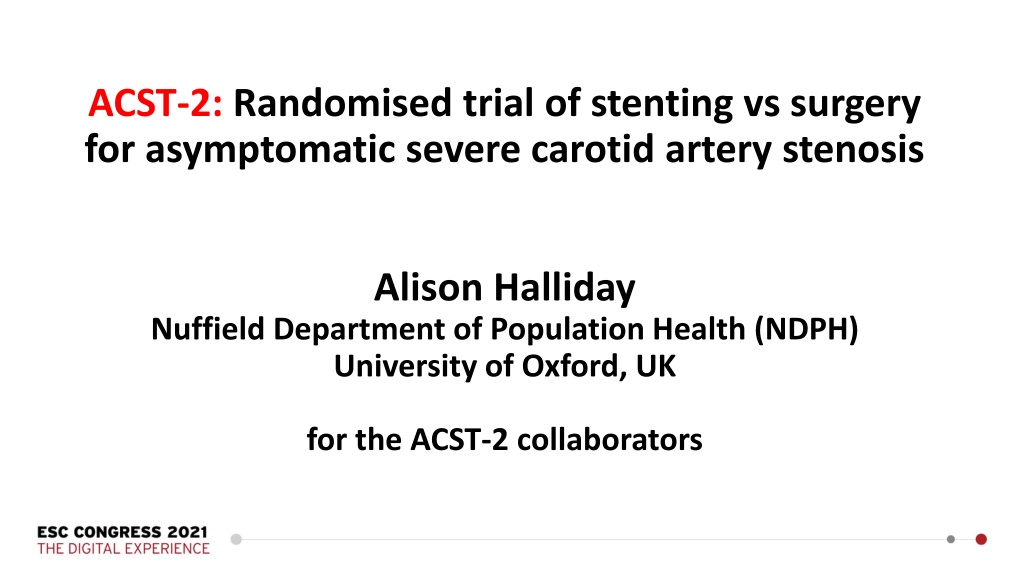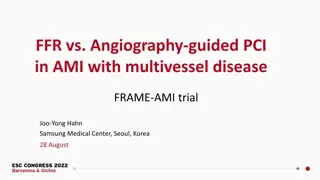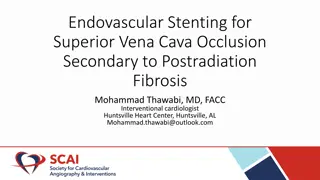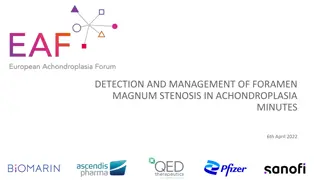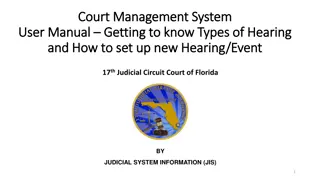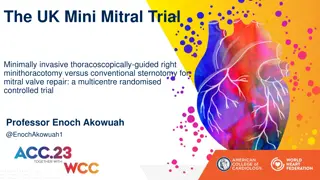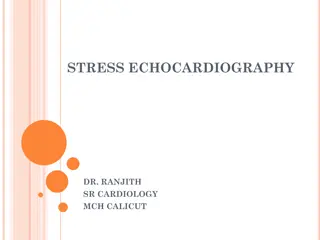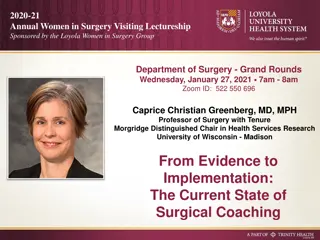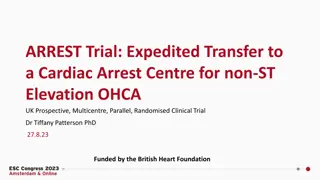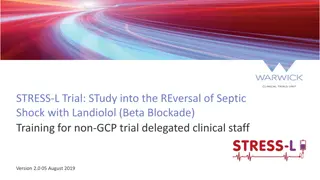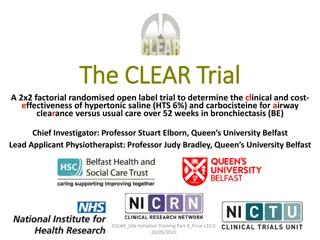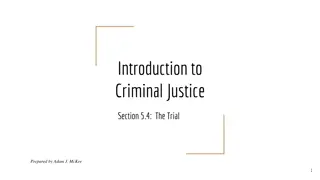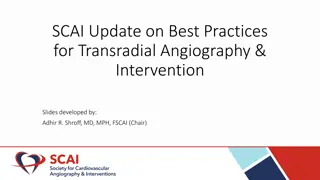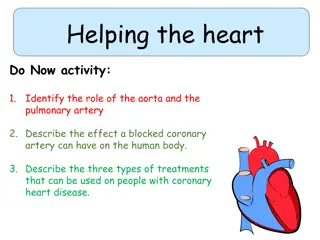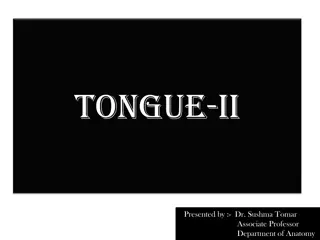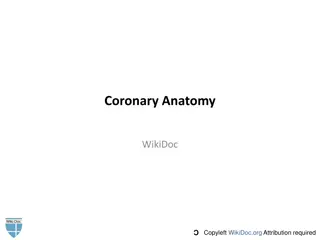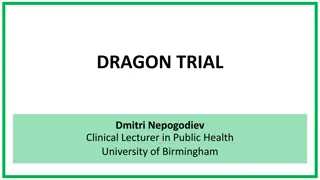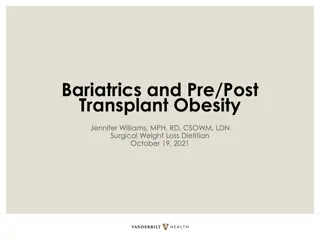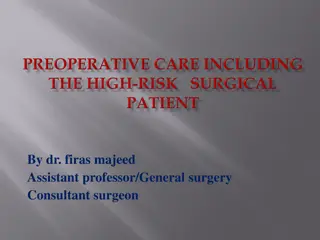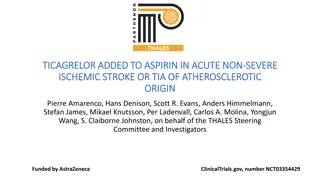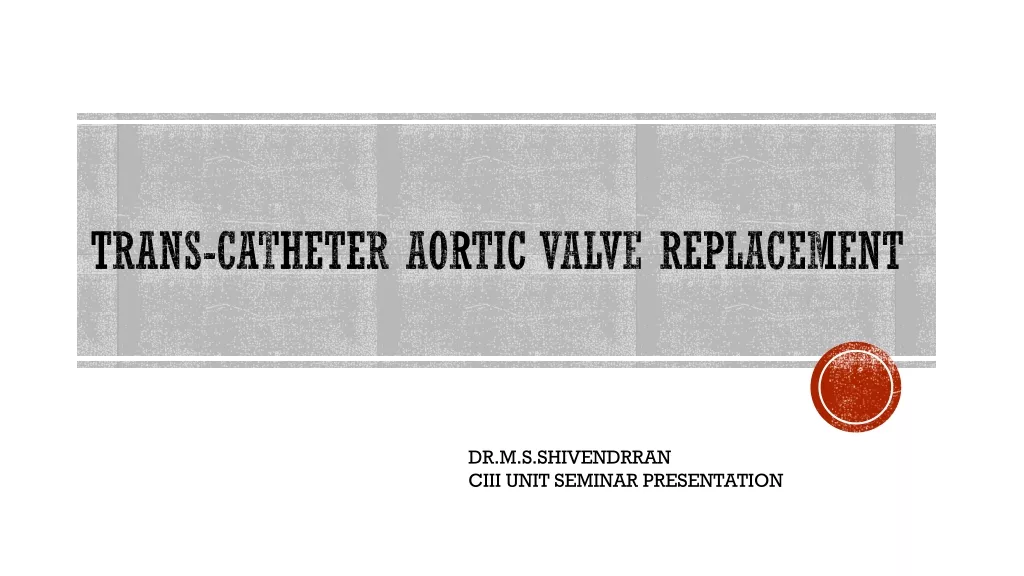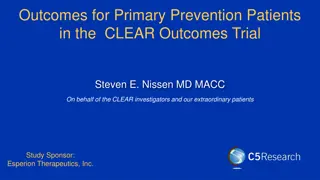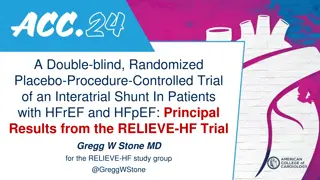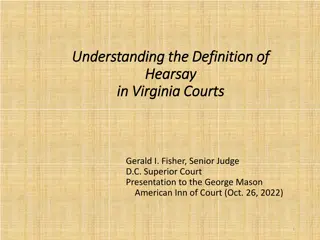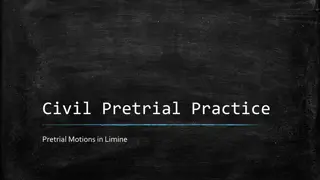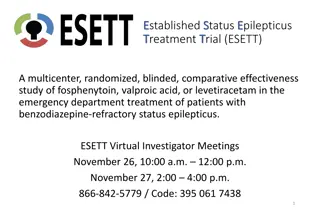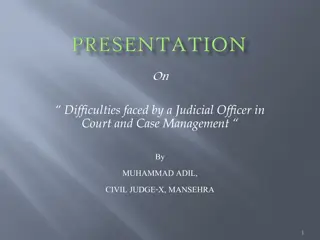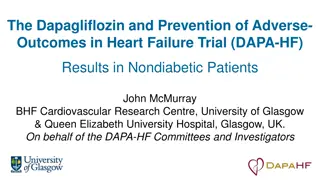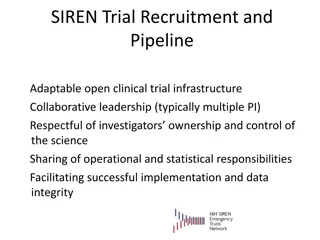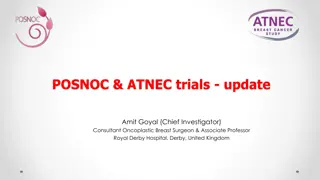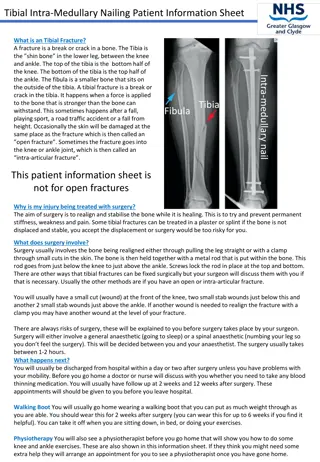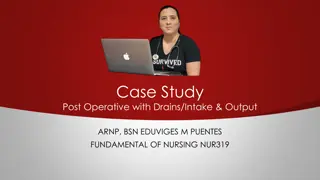ACST-2 Trial: Stenting vs. Surgery for Carotid Artery Stenosis
ACST-2 is a randomized trial comparing carotid artery stenting (CAS) versus carotid artery surgery (CEA) in asymptomatic patients with severe carotid stenosis. The trial, published in The Lancet in August 2021, involved 3625 patients. While surgery has been shown to reduce stroke rates, modern medical therapy also proves effective. Stenting and surgery each carry a low risk of complications, as demonstrated by nationwide registry data. The need for randomized evidence arises to accurately compare long-term non-procedural stroke rates. The trial was conducted across 130 hospitals in Europe, showcasing collaboration among vascular surgeons, interventionists, and stroke doctors.
Download Presentation

Please find below an Image/Link to download the presentation.
The content on the website is provided AS IS for your information and personal use only. It may not be sold, licensed, or shared on other websites without obtaining consent from the author. Download presentation by click this link. If you encounter any issues during the download, it is possible that the publisher has removed the file from their server.
E N D
Presentation Transcript
ACST-2: Randomised trial of stenting vs surgery for asymptomatic severe carotid artery stenosis Alison Halliday Nuffield Department of Population Health (NDPH) University of Oxford, UK for the ACST-2 collaborators
ACST-2 is published online in The Lancet on 29 Aug 2021, with immediate open access All authors declare no conflicts of interest
ACST-2: trial in 3625 patients of carotid artery stenting (CAS) vs carotid artery surgery (CEA: endarterectomy )
ACST-2: trial of carotid stenting (CAS) vs surgery (CEA) Background on asymptomatic patients with severe carotid stenosis Surgery restores patency, and trials show it ~halves later stroke rates. But, modern medical therapy also ~halves long-term stroke rates. Stenting also restores patency, and in recent nationwide registry data CAS and CEA each have ~1% risk of causing disabling stroke or death.
2014-19 German mandatory nationwide registry of in-hospital* CAS/CEA risks in asymptomatic patients Stenting Surgery 18,000 CAS 86,000 CEA Disabling stroke or death: 0.7% 0.7% Any stroke or death: 1.8% 1.4% NB In-hospital stroke risks were not affected by gender, or by age. * Median 4-5 days to discharge; 30-day risks would be higher. Source: https://iqtig.org/qs-verfahren/qs-karotis
ACST-2: carotid stenting (CAS) vs surgery (CEA) CAS vs CEA: why do we also need randomised evidence? Large, representative registries can assess procedural hazards, and determine reliably whether they depend on gender or age. But, registries cannot reliably compare long-term non-procedural stroke rates; for this, large-scale randomised evidence is required.
ACST-2: carotid stenting (CAS) vs surgery (CEA) - Randomised trial in 130 hospitals (mostly European), each with a collaborating vascular surgeon, interventionist, and stroke doctor - Collaborators used their normal procedures, with, for stenting, any CE-approved devices and double anti-platelet therapy.
ACST-2: carotid stenting (CAS) vs surgery (CEA) - Severe carotid artery stenosis ( 60% on ultrasound), with no recent ipsilateral stroke or other symptoms from it - Thought to need a carotid procedure (stenting or surgery), but substantially uncertain whether to prefer CAS or CEA
ACST-2: carotid stenting (CAS) vs surgery (CEA) - 3625 patients randomised, half to stenting and half to surgery (70% male, 30% diabetic, mean age 70, mean follow-up 5 years) - Both groups got good long-term medical treatment, 80-90% with lipid-lowering, anti-thrombotic and anti-hypertensive therapy. - Strokes were classified by residual disability 6 months afterwards (defining a disabling stroke as modified Rankin Score [mRS] 3-5).
ACST-2: carotid stenting (CAS) vs surgery (CEA) 5-year risk of procedural death, or of disabling or fatal stroke Left: Including procedural risks, Right: Excluding procedural risks 4 4 1811 CAS vs 1814 CEA Long-term stroke rate ratio, CAS vs CEA, 0.98 (0.64-1.48) % 3.5% CEA % 3.4% CAS 3 3 2.5% CEA 2.5% CAS 2 2 1 ~1% procedural risk 1 0 0 years 0 1 2 3 4 5 years 0 1 2 3 4 5
ACST-2: carotid stenting (CAS) vs surgery (CEA) Severity of worst procedural event & worst non-procedural stroke Procedural (<30 days) stroke or death Non-procedural stroke (with mean 5-year FU) Allocated CAS n=1811 Allocated CEA n=1814 Allocated CAS n=1748* Allocated CEA n=1767* 15 (0.9%) 18 (1.0%) Disabling or fatal 44 (2.5%) 45 (2.5%) Non-disabling 48 (2.7%) 29 (1.6%) 47 (2.7%) 34 (1.9%) * Excludes the 63 CAS vs 47 CEA patients who had a procedural stroke or death Includes the 2 CAS vs 6 CEA procedural deaths not involving a stroke
ACST-2: carotid stenting (CAS) vs surgery (CEA) Severity of worst procedural event, and worst non-procedural stroke Procedural (<30 days) stroke or death Non-procedural stroke (with mean 5-year FU) Allocated CAS n=1811 Allocated CEA n=1814 Allocated CAS n=1748 Allocated CEA n=1767 Disabling or fatal 15 18 44 45 Non-disabling: mRS score 2 mRS score 1 mRS score 0 9 9 9 5 23 16 15 5 23 15 17 12
ACST-2: carotid stenting (CAS) vs surgery (CEA) Any procedural death or any stroke at any time, by severity Allocated CAS n=1811 Allocated CEA n=1814 mRS >1: Fatal, disabling, or unable to carry out some previously usual activities 77 77 mRS 0-1: Non-disabling, and still able to carry out all previously usual activities 77 49 (4.2%) (2.7%)
ACST-2: carotid stenting (CAS) vs surgery (CEA) 3625 patients with severe stenosis but no recent ipsilateral symptoms, half allocated CAS, half CEA; good compliance, and good medical therapy. Summary of results 1% 30-day risk, in each group, of procedural death or disabling stroke; 2.5% 5-year risk, in each group, of non-procedural disabling/fatal stroke. But, with stenting, there was a 1-2% excess risk of non-disabling stroke that left patients still able to carry out all their previously usual activities.
Stenting vs surgery: ACST-2 results plus other evidence Procedural strokes: An excess of non-disabling procedural strokes from stenting is consistent with large, recent, nationally representative registry data. Non-procedural strokes: To compare the effects of CAS vs CEA, ACST-2 should be considered along with all other major trials. 8 major trials of CAS vs CEA, 4 in asymptomatic and 4 in symptomatic patients, have been reported. A formal meta-analysis can combine their findings.
Non-procedural stroke incidence in the 8 major trials of CAS vs CEA
Conclusions from the German national registry and from ACST-2 and the other major trials of CAS vs CEA Competent CAS and CEA involve ~1% procedural death or disabling stroke, then have similar effects on long-term rates of fatal or disabling stroke. For asymptomatic patients with severe stenosis, previous trials showed that, even if good medical treatment is given, CEA ~halves long-term stroke rate. If so, then in ACST-2, where 0.5% per year had a fatal or disabling stroke with either CAS or CEA, with neither procedure ~1% per year would have done so.
ACST-2 is published online in The Lancet on 29 Aug 2021 with immediate open access The chief acknowledgements are to the patients who agreed to participate; the collaborating doctors at 130 hospitals in 33 countries who randomised them from 2008-20 and are continuing follow-up until 2026, and trial staff. ACST-2 has for some years been hosted and funded by Oxford University s Nuffield Department of Population Health (NDPH; Prof Rory Collins). Current funding is from the MRC/BHF/CRUK core support for the NDPH. Until 2013, funding was from the UK NIHR HTA and BUPA Foundation.
